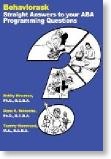mainstreaming
Are there any Summer camps that do disability inclusion right?
08/07/13 12:09 Filed in: autism
As Summer is upon us, the thought goes to Summer camp where many typically developing children spend a few weeks away from home, hopefully to have transformational camp experiences. Of course, we would love this for our children with autism as well, but then starts the depressing search, where we find no shortage of camps that segregate our children and frequently lump all children with disabilities into one heterogeneous group. The search for a Summer camp that is truly inclusive can be a difficult one.
I recently landed upon a website of a camp called Ramah that I think is actually doing inclusion right. Based on the six-minute description offered by the director of their special needs programs, it has been a process from segregation to integration based on parent request. In short, this is a Summer camp that actually listened to parents in their community!
The camp describes a four track orientation, with segregated cabins for some campers and vocational training during camp; however, they also offer an integrated cabin experience where they train staff prior to camp, and add an extra counsellor so that there is sufficient staff to ensure that the child with special needs is properly supported.
What impressed me most is that some of these campers with special needs actually went on to be hired by camp and became staff members themselves. That’s truly putting your money where your mouth is! Let’s hope that other camps emulate this model and truly integrate children with special needs into their communities.
I recently landed upon a website of a camp called Ramah that I think is actually doing inclusion right. Based on the six-minute description offered by the director of their special needs programs, it has been a process from segregation to integration based on parent request. In short, this is a Summer camp that actually listened to parents in their community!
The camp describes a four track orientation, with segregated cabins for some campers and vocational training during camp; however, they also offer an integrated cabin experience where they train staff prior to camp, and add an extra counsellor so that there is sufficient staff to ensure that the child with special needs is properly supported.
What impressed me most is that some of these campers with special needs actually went on to be hired by camp and became staff members themselves. That’s truly putting your money where your mouth is! Let’s hope that other camps emulate this model and truly integrate children with special needs into their communities.
Autism & Wandering: Common Sense Solutions
15/10/12 12:13 Filed in: autism | Asperger's Syndrome
Fears about children with autism wandering off have kept many a parent awake at night. When you have a child who wanders, or in some cases i
The issue that keeps almost all of us awake is when our child is in the care of the school. Unfortunately, most children with autism in typical classrooms do not have locked, fenced school yards and enough supervision to keep these integrated children safe. The schools are very quick to defend their purportedly safe environments even when a parent sees all the gaping holes in security around the school. If the parent gets too pushy, the school bureaucracy often defends their lackadaisical stance and becomes aggressive with parents, possibly invoking the nuclear option by saying: “if this school is not secure enough for your little Johnny, then perhaps we need to reevaluate whether your child should be integrated.” Since so many parents are fighting for mainstreaming, this ends the discussion immediately and is one of the major motivations to get “lawyered up.” Some parents just give up and accept segregation due to the safety concerns.
Since the parent cannot rely on the school to protect the physical safety or their child, the next fight is to require one-on-one supervision in the school yard. The school then typically deploys the “buddy” system where they get older children to “supervise” the autistic child even in elementary school!
I came across an article by Amy Daniels, Ph.D., an Autism Speaks health policy researcher, who gives an in-depth analysis of autism and wandering. At the end of the article she says: “The time to develop solutions is now.” I couldn’t agree with her more.
Here’s my solution. Every school yard needs to be 100% secured with high fences and no way to get in or out from the school compound. All exits from the school need to be monitored every day, all day.
With the number of children afflicted with autism growing, every school will have to be secured. Not only will this help children with autism, it will also help all children remain safe and give every parent a better night’s sleep.
t may be more accurate to say is an “escape artist,” as long as the child is in your care you can create a safe environment with locks on windows and doors and alarms that sound any time someone opens a window or door. Thousands of parents have created the equivalent of Fort Knox in their home and have trained everyone in the child’s orbit to ensure that the child does not leave. Parents are generally vigilant and the child is safe. Some parents have even elected to have a tracking system on their child as a last resort.The issue that keeps almost all of us awake is when our child is in the care of the school. Unfortunately, most children with autism in typical classrooms do not have locked, fenced school yards and enough supervision to keep these integrated children safe. The schools are very quick to defend their purportedly safe environments even when a parent sees all the gaping holes in security around the school. If the parent gets too pushy, the school bureaucracy often defends their lackadaisical stance and becomes aggressive with parents, possibly invoking the nuclear option by saying: “if this school is not secure enough for your little Johnny, then perhaps we need to reevaluate whether your child should be integrated.” Since so many parents are fighting for mainstreaming, this ends the discussion immediately and is one of the major motivations to get “lawyered up.” Some parents just give up and accept segregation due to the safety concerns.
Since the parent cannot rely on the school to protect the physical safety or their child, the next fight is to require one-on-one supervision in the school yard. The school then typically deploys the “buddy” system where they get older children to “supervise” the autistic child even in elementary school!
I came across an article by Amy Daniels, Ph.D., an Autism Speaks health policy researcher, who gives an in-depth analysis of autism and wandering. At the end of the article she says: “The time to develop solutions is now.” I couldn’t agree with her more.
Here’s my solution. Every school yard needs to be 100% secured with high fences and no way to get in or out from the school compound. All exits from the school need to be monitored every day, all day.
With the number of children afflicted with autism growing, every school will have to be secured. Not only will this help children with autism, it will also help all children remain safe and give every parent a better night’s sleep.
Successful Autism Integration: How it makes ALL kids better human beings
02/05/12 13:08 Filed in: autism | Asperger's Syndrome
As parents of children with autism, we want our children to have the same kind of enriching experiences in life as do typically developing children. The best way to ensure a rich childhood, full of opportunities, is to integrate our children with typically developing children.
Unfortunately, there are often barriers created by a variety of people, particularly a small percentage of parents of typically developing children. These parents see no benefit for their children to be integrated with children who are challenged with special needs. This is particularly true when it comes to the integration of children afflicted with autism. Let’s face it: our children are not always reinforcing for others and they often behave in ways that completely ignore social norms. This can create discomfort for some.
However, what many parents of typically developing children do not understand is the tremendous value of successful integration of the disabled for their typically developing children.
So what is the value of successful integration for typically developing kids? Here is a partial list.
Typically developing children:
That’s a long list of very valuable benefits to integration; however, the most important benefit for typically developing children when they are properly integrated and interacting with children who suffer from autism, is that they learn to become decent human beings. I think most would agree we can use more of that in our society.
Many parents send their children to faith-based organizations to learn how to be a person with good values. Just add a child with autism to the mix, and the learning process is greatly accelerated.
Unfortunately, there are often barriers created by a variety of people, particularly a small percentage of parents of typically developing children. These parents see no benefit for their children to be integrated with children who are challenged with special needs. This is particularly true when it comes to the integration of children afflicted with autism. Let’s face it: our children are not always reinforcing for others and they often behave in ways that completely ignore social norms. This can create discomfort for some.
However, what many parents of typically developing children do not understand is the tremendous value of successful integration of the disabled for their typically developing children.
So what is the value of successful integration for typically developing kids? Here is a partial list.
Typically developing children:
- learn not to prejudge the ability of others
- learn how to break down skills and teach them to others, thereby becoming excellent teachers
- are exposed to exceptionally positive role models in the form of therapists, psychologists and tutors
- receive much more positive adult attention than they otherwise would in a large group of children, since successful integration requires the adult/child ratio to be greater
- learn to feel very good about themselves and their ability to lead
- are forced to look beyond their egocentric world and see that there are others in the world with real challenges, who are far less fortunate only because they drew the short straw in life’s lottery
- become very comfortable with people who are disabled
- learn empathy
- are protected from bullying due to the increased adult supervision that surrounds children with autism
- are provided more enriching opportunities due to the adults who often orchestrate and/or design rich social interactions
- are exposed to potential career opportunities and lucrative job prospects
- have a great experience to put on their resume when applying to college
That’s a long list of very valuable benefits to integration; however, the most important benefit for typically developing children when they are properly integrated and interacting with children who suffer from autism, is that they learn to become decent human beings. I think most would agree we can use more of that in our society.
Many parents send their children to faith-based organizations to learn how to be a person with good values. Just add a child with autism to the mix, and the learning process is greatly accelerated.
How To Skate Around Discrimination
21/02/12 11:09 Filed in: autism | Asperger's Syndrome
I just read about the latest battles of a family that successfully integrated a child into skating lessons. This story transported me back in time to when I had to convince various teachers that having a child with a “helper” is the best way to successfully integrate my child into an activity.
I can’t believe that I’m still reading about the same issue twenty years later! In this article, the parents were savvy. They quickly went over the head of the luddite who has no concept of the term “accommodation” and called the media. In this case, the media did their job and put pressure on the mayor, who immediately realized that this flawed policy must be changed. Kudos to those smart parents who leveraged the media to change a policy that is going to help every child with special needs who follows. I’ve written in the past on how to address this problem in a non-confrontational manner; however, since this pattern keeps rhyming, it is worth revisiting the issue.
Based on the lessons learned from this news story, here are the following steps you may consider taking when you sniff a potential problem when integrating your child: first, approach the person in charge of registration and with a very energetic, positive demeanor say that you’d love to have your child learn how to skate (swim, dance or whatever); however, due to your child’s special needs, you have a shadow aide, or helper, to provide free of charge to the class to support your child. You may want to add that this person knows your child quite well and will only jump in when your child has a problem understanding the directions given by the instructor.
One of two things will happen: the manager will say yes, or no.
If you are given permission, congratulations! If the manager is amenable (and you feel comfortable), then you may add that it would be less stigmatizing for the child if the helper could wear a T-shirt with the name of the rink on it, and thereby keep the children and parents guessing regarding who this second adult is in class. Your child’s shadow will simply look like a regular volunteer, not necessarily there for your child.
If the manager declines, then it is time for step two: phone your local paper and set up an interview about how the publicly funded recreation center is discriminating against a disabled child. If the reporter is not seasoned enough to interview the mayor, you might want to suggest it. In addition, if you are lucky enough to live in a country with laws protecting your child, you may want to mention those laws to the reporter. If you want to make the rubble bounce, it may be useful to send the reporter a link to the website with those laws, and copy and paste the specific part of the law into the body of the e-mail. If you are not lucky enough to have those laws at your fingertips, another idea is to contact all the various disability groups and mention that it may be a good idea for them to contact the reporter and their politicians. The pressure put on these folks will generally be too much to handle and accommodations will be made.
Ironically, once you succeed in integrating your child and they realize that life as we know it did not end, the recreation center will celebrate its success in being so open-minded and progressive! Let them own your victory; that will help the next child in line, and that child’s parent who will have no clue that the reason it was so easy to include a shadow teacher is because of a bloody minded parent who preceded them.
Here’s to bloody-minded parents!
I can’t believe that I’m still reading about the same issue twenty years later! In this article, the parents were savvy. They quickly went over the head of the luddite who has no concept of the term “accommodation” and called the media. In this case, the media did their job and put pressure on the mayor, who immediately realized that this flawed policy must be changed. Kudos to those smart parents who leveraged the media to change a policy that is going to help every child with special needs who follows. I’ve written in the past on how to address this problem in a non-confrontational manner; however, since this pattern keeps rhyming, it is worth revisiting the issue.
Based on the lessons learned from this news story, here are the following steps you may consider taking when you sniff a potential problem when integrating your child: first, approach the person in charge of registration and with a very energetic, positive demeanor say that you’d love to have your child learn how to skate (swim, dance or whatever); however, due to your child’s special needs, you have a shadow aide, or helper, to provide free of charge to the class to support your child. You may want to add that this person knows your child quite well and will only jump in when your child has a problem understanding the directions given by the instructor.
One of two things will happen: the manager will say yes, or no.
If you are given permission, congratulations! If the manager is amenable (and you feel comfortable), then you may add that it would be less stigmatizing for the child if the helper could wear a T-shirt with the name of the rink on it, and thereby keep the children and parents guessing regarding who this second adult is in class. Your child’s shadow will simply look like a regular volunteer, not necessarily there for your child.
If the manager declines, then it is time for step two: phone your local paper and set up an interview about how the publicly funded recreation center is discriminating against a disabled child. If the reporter is not seasoned enough to interview the mayor, you might want to suggest it. In addition, if you are lucky enough to live in a country with laws protecting your child, you may want to mention those laws to the reporter. If you want to make the rubble bounce, it may be useful to send the reporter a link to the website with those laws, and copy and paste the specific part of the law into the body of the e-mail. If you are not lucky enough to have those laws at your fingertips, another idea is to contact all the various disability groups and mention that it may be a good idea for them to contact the reporter and their politicians. The pressure put on these folks will generally be too much to handle and accommodations will be made.
Ironically, once you succeed in integrating your child and they realize that life as we know it did not end, the recreation center will celebrate its success in being so open-minded and progressive! Let them own your victory; that will help the next child in line, and that child’s parent who will have no clue that the reason it was so easy to include a shadow teacher is because of a bloody minded parent who preceded them.
Here’s to bloody-minded parents!
Finding Religion to End Run Autism Education Discrimination
10/02/12 17:32 Filed in: autism | Asperger's Syndrome
Isn’t it grand when the public school system successfully mainstreams children with autism. When everyone works together and makes the child with autism a valued member of the classroom, it’s truly wonderful!
What happens, though, when this is not the reality? Parents have three choices: 1) they can accept the sub-standard educational experience offered to their child and live with this depressing reality for 13 years, 2) they can fight the system, getting the lawyers to communicate in a way that makes the school do the right thing (often mortgaging their house to pay for the fight), or 3) they can place their child in private school.
Here’s where religion comes in. When shopping for a private school, it may be wise to “find religion” because your odds of finding a private school that will actually take your child increases once you add parochial schools to the mix! In addition, many religious private schools are not as expensive since they are often subsidized by members of the associated congregation. An additional benefit is that your child becomes a member of a peer group that is being taught kindness and inclusion for special needs children as part of religious teachings.
Not all religious school administrators are equally open-minded; however, you can visit a number of parochial schools until you meet a religious leader who is sufficiently pious to do the right thing. The advantage of a private school is that you are the customer and, therefore, the school has more incentive and flexibility to meet the needs of your child.
Sometimes it’s worth fighting the powers that be to make sure your child has access to the neighborhood school and, therefore, the neighborhood kids; however, sometimes the battle may be too painful, onerous or impossible to win. When the battle against intransigent public schools hits the wall, it may be time to find a welcoming religious community to provide your child with a viable alternative.
What happens, though, when this is not the reality? Parents have three choices: 1) they can accept the sub-standard educational experience offered to their child and live with this depressing reality for 13 years, 2) they can fight the system, getting the lawyers to communicate in a way that makes the school do the right thing (often mortgaging their house to pay for the fight), or 3) they can place their child in private school.
Here’s where religion comes in. When shopping for a private school, it may be wise to “find religion” because your odds of finding a private school that will actually take your child increases once you add parochial schools to the mix! In addition, many religious private schools are not as expensive since they are often subsidized by members of the associated congregation. An additional benefit is that your child becomes a member of a peer group that is being taught kindness and inclusion for special needs children as part of religious teachings.
Not all religious school administrators are equally open-minded; however, you can visit a number of parochial schools until you meet a religious leader who is sufficiently pious to do the right thing. The advantage of a private school is that you are the customer and, therefore, the school has more incentive and flexibility to meet the needs of your child.
Sometimes it’s worth fighting the powers that be to make sure your child has access to the neighborhood school and, therefore, the neighborhood kids; however, sometimes the battle may be too painful, onerous or impossible to win. When the battle against intransigent public schools hits the wall, it may be time to find a welcoming religious community to provide your child with a viable alternative.
The Dignity of a Job
27/09/11 11:21 Filed in: autism | Asperger's Syndrome
Once your child has graduated from high school, whether in the typical educational stream or in the special education stream, the next question you need to ask is: How is he or she going to make a living?
Some of you may be thinking: “Is this realistic?” Yes, it is. Read more...
Some of you may be thinking: “Is this realistic?” Yes, it is. Read more...
The Power of Obsession
20/09/11 15:21 Filed in: autism | Asperger's Syndrome
Most parents of a child with autism know that children with autism spend an inordinately long period of time on narrow interests. Read more...
The Integration Ballet
17/09/11 17:30 Filed in: autism | Asperger's Syndrome

Autism and the Role of Music: Part Two
15/09/11 18:09 Filed in: autism | Asperger's Syndrome
Now that you’ve mastered the strategy discussed in Autism and the Role of Music, we can now talk about the next steps. Read more...
Autism and the Role of Music
12/09/11 17:49 Filed in: autism | Asperger's Syndrome

Read more...














